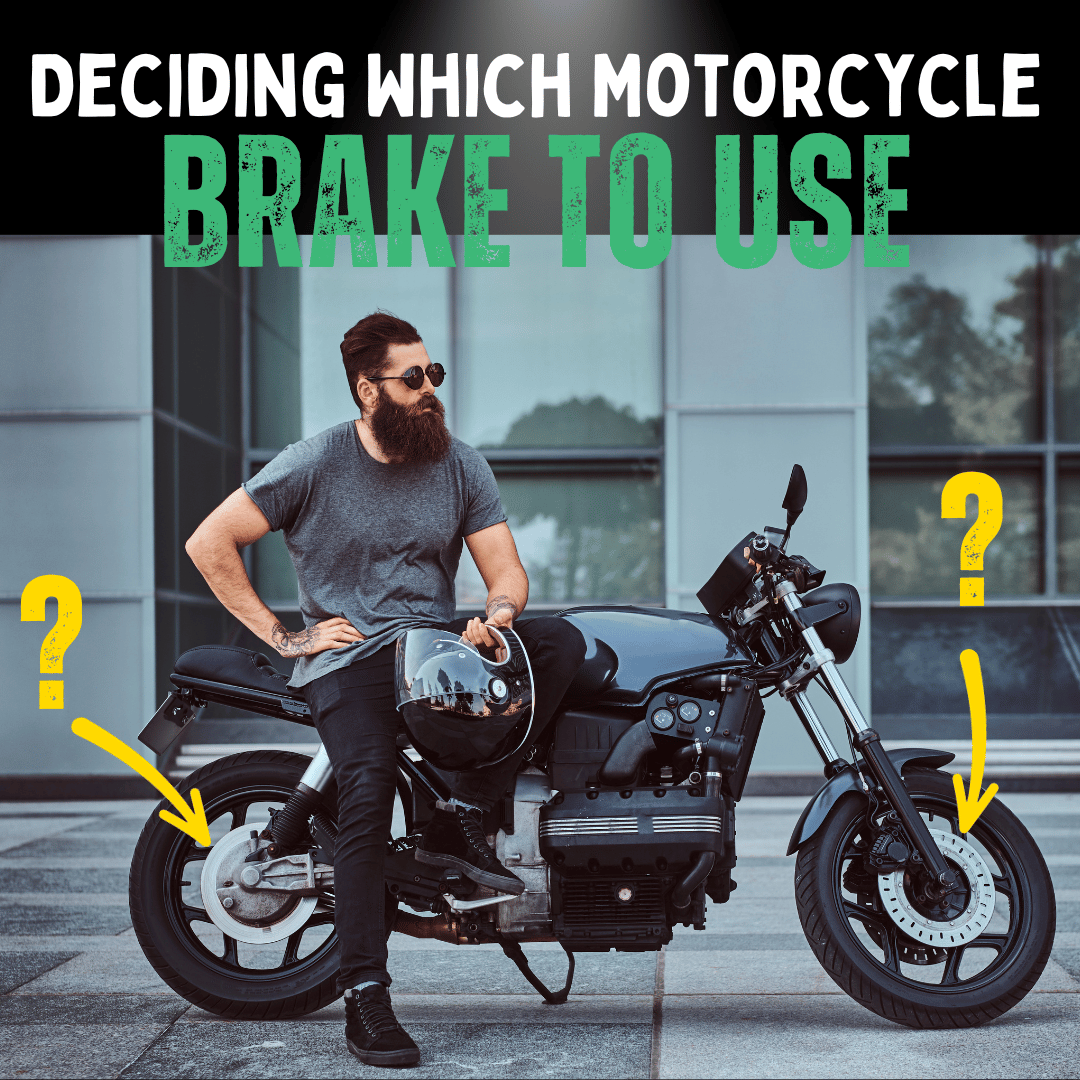Updated: 15.4.25
Whether you're a fresh-faced rider or a seasoned two-wheeled veteran, one skill stands out as essential — understanding motorcycle braking.
Let’s take a deep dive into the world of braking so you can ride with more safety, confidence, and control every time you hit the road.
The Basics of Motorcycle Braking
Braking isn’t just about grabbing the lever. It’s a refined skill involving timing, balance, and a deep understanding of your machine.
Whether weaving through traffic or taking corners in the countryside, knowing how your brakes behave is critical to staying upright and in control.
The Braking System: Key Components
Brake Pads, Rotors, and Calipers — These three elements work together to deliver stopping power. Quality matters. Brands like Brembo, EBC Brakes, and Galfer are industry leaders for a reason.
Top Tips for Effective Braking

Use Both Brakes — Always
Coordinating front and rear brake use distributes braking forces, keeps the bike balanced, and helps avoid skids or nose dives.
Front Brake = Main Stopper
Your front brake does the heavy lifting — up to 80% of total stopping power. Learn to modulate it smoothly for best results, especially in emergencies.
Smooth Is Safe
Think of braking like pouring tea — smooth and steady. Jerky braking shifts weight abruptly and can reduce traction.
Slow-Speed Control
At walking pace or in parking lots, the rear brake is king. It stabilises the bike while allowing fine speed adjustments without upsetting balance.
Advanced Braking Technology
From wooden blocks to hydraulic discs and ABS, braking systems have come a long way.
- Mechanical Drum Brakes – Introduced in 1899, laid the foundation.
- Hydraulic Brakes (1918) – Increased efficiency and ease of use.
- Disc Brakes – Improved cooling and consistency, especially under heavy loads.
- ABS – Prevents wheel lock-up, especially in slippery conditions, and is now standard on most modern bikes.
Modern motorcycles often include advanced systems that monitor traction and apply variable braking pressure automatically.
Brake System Maintenance
Braking performance depends on regular maintenance:
- Check fluid levels monthly.
- Inspect pads for wear.
- Look for cracks, leaks, or unusual noises.
- Replace worn parts with OEM or high-quality aftermarket options.
Common Braking Mistakes and Fixes
| Braking Mistakes and Tips |
|---|
| Braking too early or too long: Lose efficiency and burn more fuel. |
| Uneven corner braking: Adjust pressure to match lean angle and road grip. |
| Ignoring maintenance: Skipped checks = reduced safety. |
| Overusing front brake at slow speed: Can cause tip-overs. |
| Using rear brake only at high speeds: Slower stopping and instability. |
| Riding the brakes: Causes premature wear and loss of efficiency. |
| Braking mid-turn: Disrupts lean and grip balance—brake before turning. |
Choosing the Right Brake Setup
Just like tyres or helmets, your braking system should suit your riding style.
- Commuters: Go for longevity and smooth performance.
- Track Riders: Focus on responsiveness and heat resistance.
- Tourers: Balance comfort, fade resistance, and long lifespan.
Test and Learn
Want to go deeper? Practice emergency stops, trail braking, and rear-only slow-speed U-turns in a safe space. Track days or advanced rider training can really sharpen your skills.
Conclusion
Mastering braking isn’t just about safety—it’s about confidence, control, and taking your riding to the next level. Learn it. Practise it. Respect it.
Every squeeze of the lever is a chance to become a smoother, smarter rider.
Safe travels!
Get in Touch 🚀
Loved our article on “Tips for Deciding Which Motorcycle Brake to Use”? We’ve got tons more where that came from!
Got questions about your kids’ ride-on bikes or want help choosing the best gear? Let’s talk!
Explore more at RiiRoo.com or hop on Live Chat and let’s ride smarter—together.





Share:
10 ESSENTIAL Techniques for Proper Motorcycle Braking
How to Tighten a Dirt Bike Chain? - 5 Simple Steps